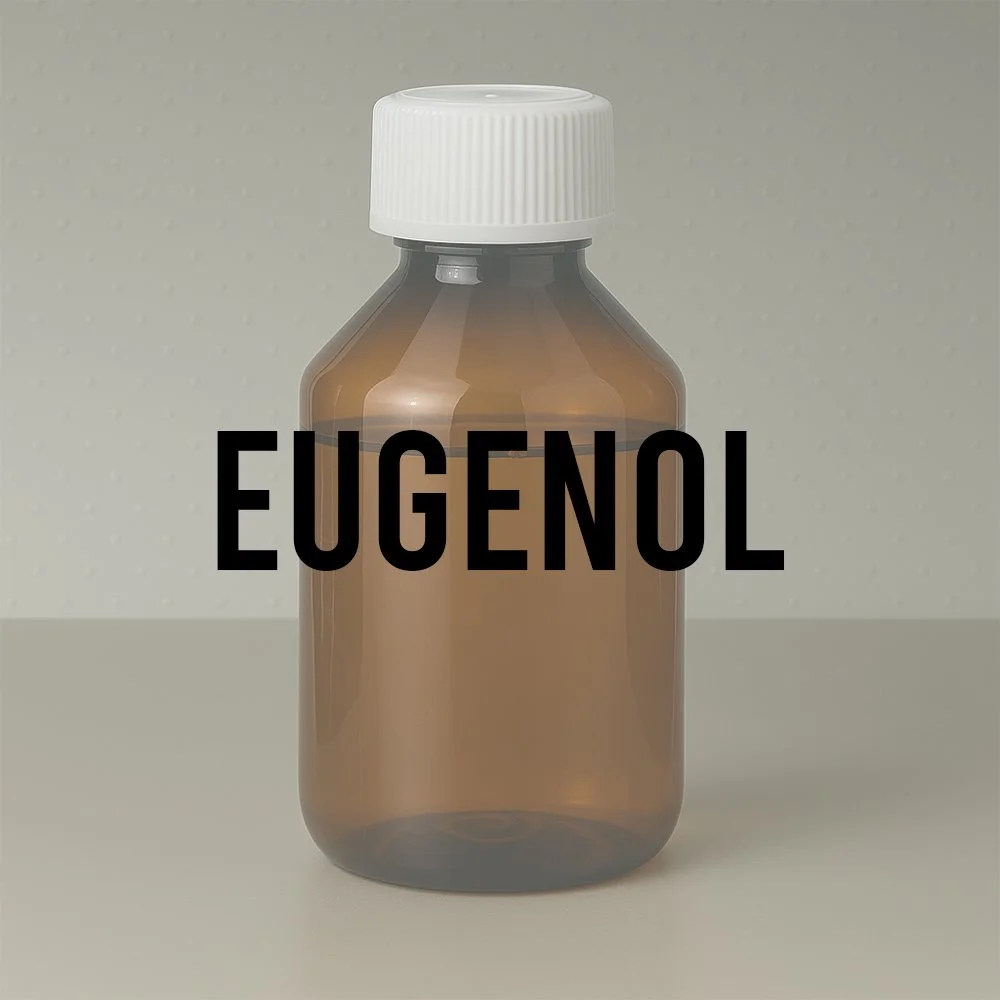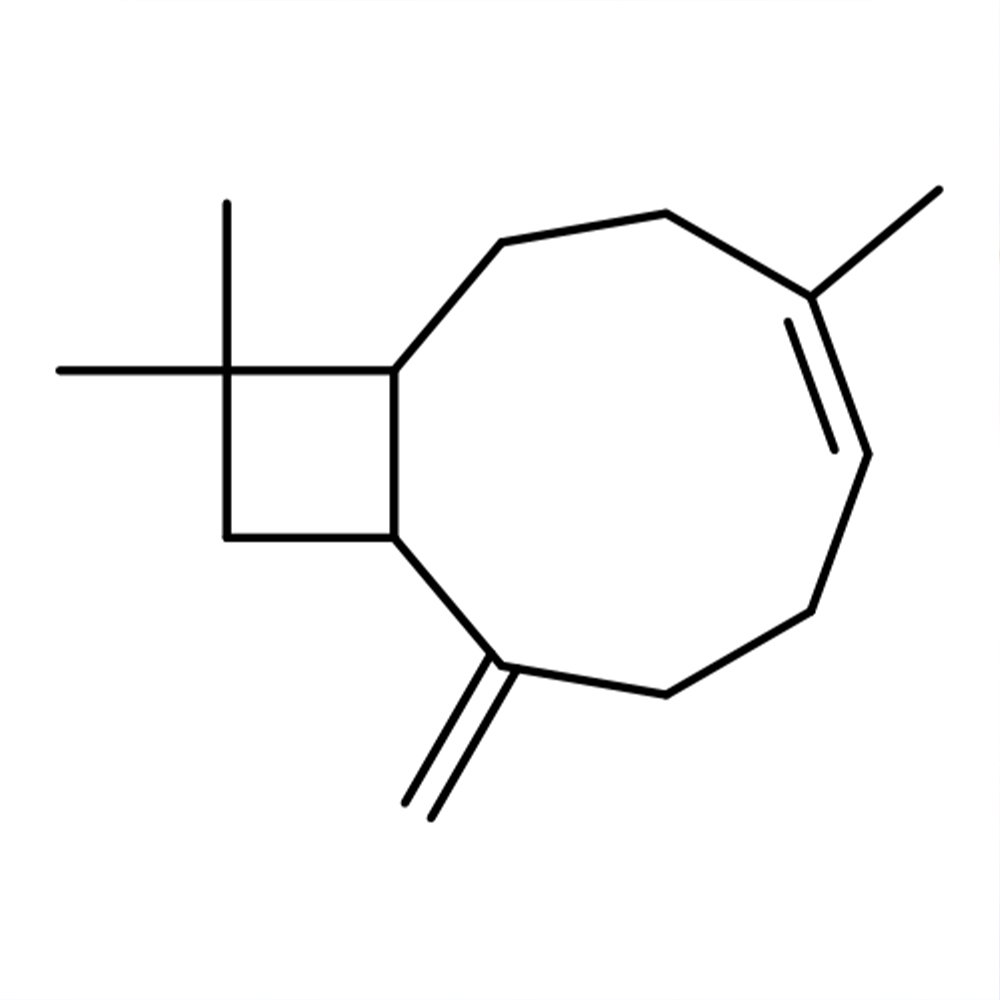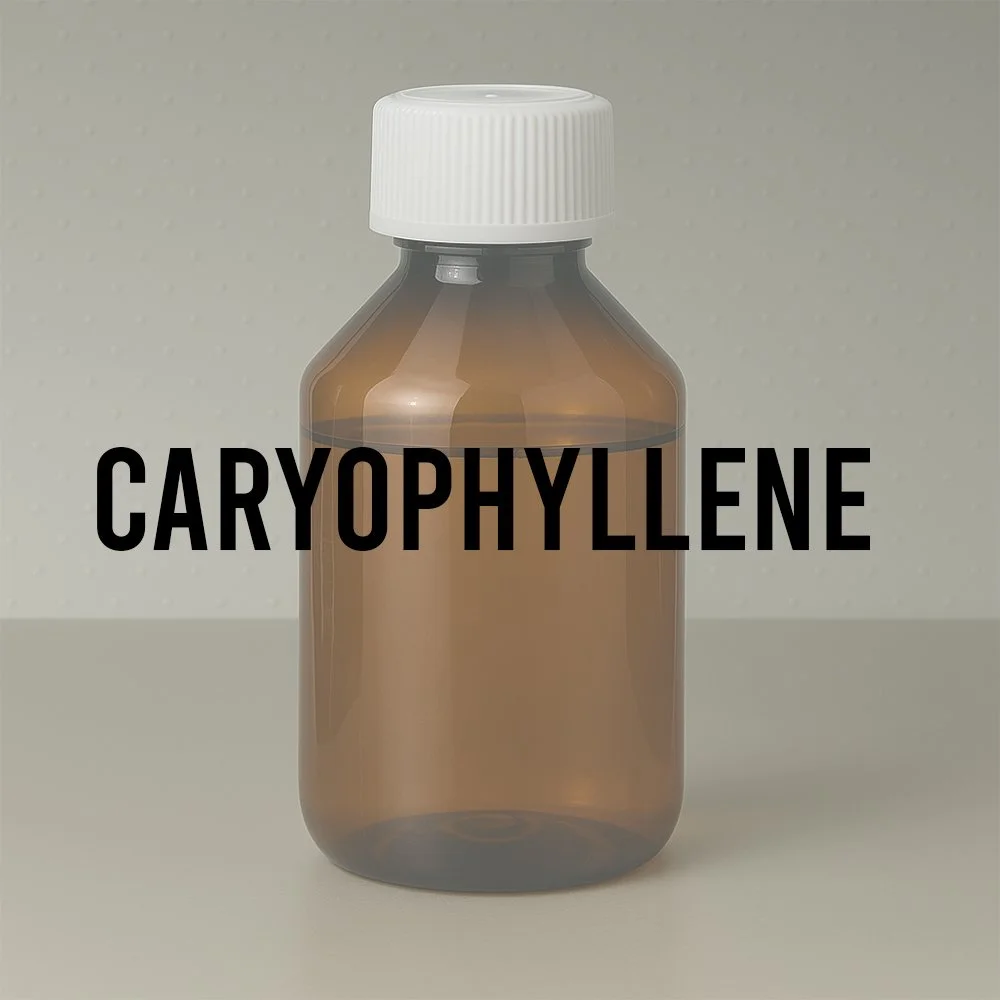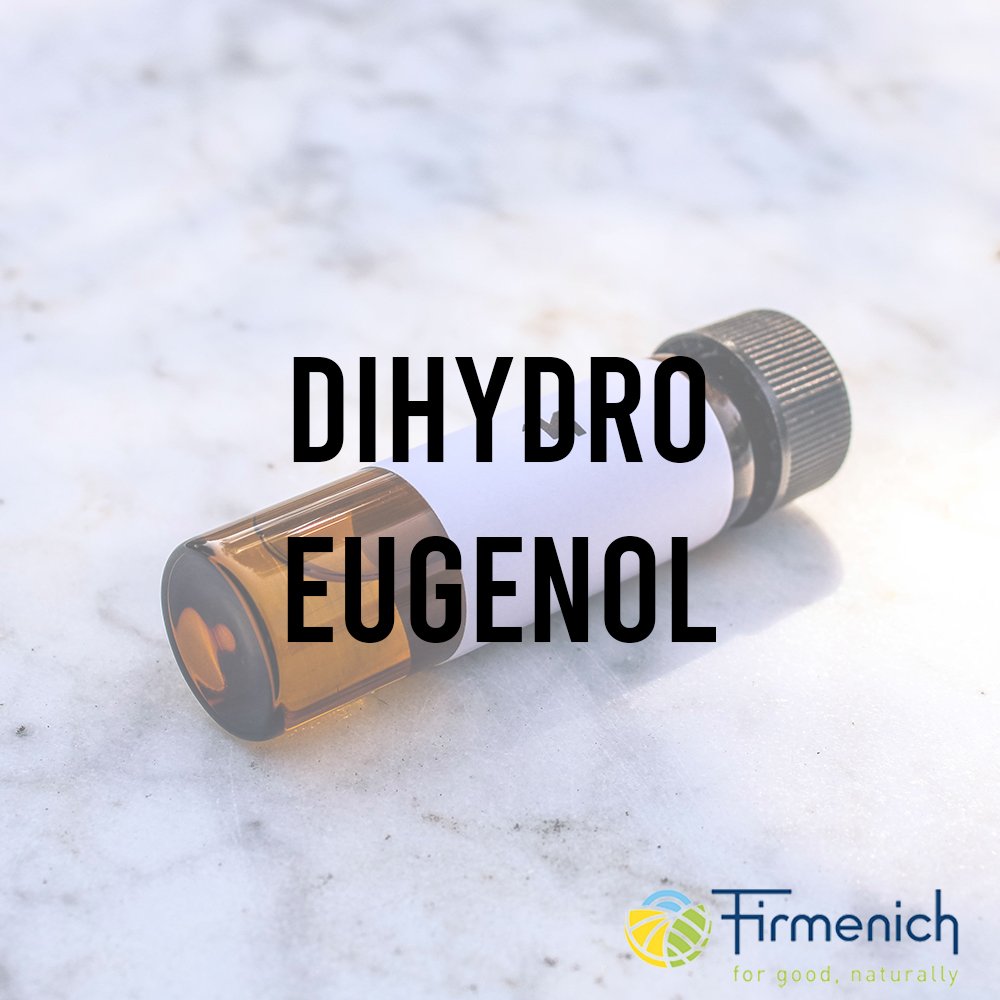EUGENOL - Technical Ingredient Overview
🔎 Chemical Name — 4-Allyl-2-methoxyphenol; 2-Methoxy-4-(2-propenyl)phenol (PubChem, n.d.)
🧪 Synonyms — 4-Allylguaiacol, Caryophyllic acid, Eugenic acid, 1-Hydroxy-2-methoxy-4-allylbenzene, p-Eugenol (PubChem, n.d.; NIST, n.d.)
📂 CAS Number — 97-53-0 (PubChem, n.d.)
📘 FEMA Number — 2467 (FEMA, n.d.; Chem-Impex, n.d.)
⚖️ Molecular Weight — 164.20 g/mol (PubChem, n.d.)
📝 Odor Type — Spicy, Phenolic
📈 Odor Strength — Medium to Strong (52-hour tenacity on paper)
👃🏼 Odor Profile — Powerful, warm-spicy, dry character; sharper and drier than clove bud oil, less woody than clove leaf oil; characteristic clove-like phenolic note with sweet undertones
⚗️ Uses — Fine fragrance (carnation, oriental, fougère compositions), flavor applications, dental materials, pharmaceutical formulations, entomological research
🧴 Appearance — Colorless to pale yellow liquid; gradually darkens and thickens upon exposure to air and light (Bauer et al., 2001)
What is Eugenol?
Eugenol (4-allyl-2-methoxyphenol) is a naturally occurring phenolic compound classified as a phenylpropanoid derivative. As the main component of clove leaf oil and cinnamon leaf oil, which may contain greater than 90% eugenol, this aromatic molecule represents one of the most significant naturally-derived fragrance and flavor materials in commercial use (Bauer et al., 2001). Chemically, eugenol belongs to the allylbenzene class of compounds, characterized by a phenolic hydroxyl group at position 1, a methoxy group at position 2, and an allyl substituent at position 4 of the benzene ring.
The compound exhibits slight solubility in water but demonstrates complete miscibility with alcohols, ethers, chloroform, and volatile oils (Bauer et al., 2001). Eugenol's physical properties include a boiling point of 253°C, a melting point of approximately -9°C, and a refractive index of 1.538-1.542 (Bauer et al., 2001). Its reactivity with oxygen necessitates proper storage conditions below 25°C with protection from light to prevent oxidative darkening and viscosity increase.
Historical Background
Eugenol's history is intimately connected with the global spice trade, particularly cloves (Syzygium aromaticum), which have been used for millennia in traditional medicine and culinary applications throughout Asia. The compound was first isolated and characterized in the mid-19th century as analytical chemistry techniques advanced sufficiently to separate and identify individual constituents from essential oils.
The industrial significance of eugenol expanded dramatically in the early 20th century when it became recognized as a valuable starting material for synthetic transformations. The isomerization of eugenol to isoeugenol was developed industrially, enabling the production of vanillin through oxidation, which remained a primary synthetic route for vanillin production until more economical processes were developed (Bauer et al., 2001). This transformation established eugenol not merely as a fragrance ingredient but as a crucial platform molecule in synthetic organic chemistry.
Throughout the 20th century, eugenol's applications diversified beyond perfumery into dentistry, where its antiseptic and anesthetic properties found extensive use in zinc oxide-eugenol formulations for temporary dental restorations and root canal sealants. Modern research continues to explore eugenol's biological activities, including antimicrobial, antioxidant, and pharmacological properties.
Olfactory Profile
Scent Family: Spicy, Phenolic
Main Descriptors: Eugenol presents a powerful, warm-spicy, dry character that is sharper than clove bud oil and less woody than clove leaf oil (Bauer et al., 2001). The scent profile combines pungent phenolic facets with sweet, slightly balsamic undertones. Unlike the fuller, rounder character of complete clove oil, isolated eugenol offers a more focused, penetrating spiciness that reads as distinctly medicinal-aromatic at high concentrations but becomes elegantly spicy and floral when appropriately diluted.
Intensity: Medium to Strong. Eugenol demonstrates significant olfactory impact even at low concentrations, requiring careful dosage management in fragrance compositions.
Tenacity: Excellent longevity with documented tenacity of approximately 52 hours on perfumer's blotter. This exceptional substantivity classifies eugenol as a middle-to-base note material.
Volatility: Moderate volatility places eugenol in the middle note category, though its tenacity extends its presence well into the base note phase. The compound exhibits sufficient volatility to contribute to initial fragrance impressions while maintaining presence throughout wear.
Fixative Role: Eugenol functions as a common component in fragrance formulations, contributing both olfactory character and fixative properties (Bauer et al., 2001). Its phenolic structure and moderate molecular weight enable it to moderate the evaporation of more volatile components while adding substantivity to compositions.
Applications in Fine Fragrance
Eugenol is extensively employed in perfumery within carnation and clove compositions, as well as in oriental and spicy fragrance types (Bauer et al., 2001). Its primary role centers on reconstructing carnation (dianthus) flower accords, where it provides the characteristic spicy-floral profile that defines this classic perfumery note. In oriental compositions, eugenol contributes warm, resinous-spicy facets that integrate seamlessly with vanilla, balsamic notes, and ambery materials.
The compound finds application in fougère structures, where its aromatic-spicy character adds depth and complexity to the lavender-coumarin-oakmoss framework. Eugenol pairs effectively with materials including galbanum, cinnamic alcohol, isoeugenol, and vanillin, enabling versatile compositional applications across multiple fragrance families. In rose compositions, small amounts of eugenol add spicy warmth that enhances the richness of damascone- and ionone-based structures.
Performance in Formula
Eugenol exhibits excellent blending characteristics with both natural and synthetic fragrance materials. Its phenolic hydroxyl group enables hydrogen bonding interactions that facilitate integration with aldehydes, alcohols, and other hydrogen bond acceptors. The allyl substituent provides sufficient lipophilic character to ensure compatibility with hydrocarbon-based materials and musks.
Chemical stability considerations require attention to oxidation potential. Eugenol gradually darkens and thickens upon air exposure, with iron, zinc, and other metal ions catalyzing oxidation (Bauer et al., 2001). Formulations should avoid metal contamination and employ appropriate antioxidant systems when long-term stability is critical. The compound demonstrates stability across typical perfumery pH ranges but may undergo structural modifications under strongly alkaline conditions.
The allyl double bond provides a site for potential chemical transformations. Catalytic hydrogenation yields dihydroeugenol, while isomerization produces isoeugenol (Bauer et al., 2001), both of which are valuable fragrance materials in their own right. Esterification and etherification of the phenolic hydroxyl generate additional commercially important derivatives, including eugenyl acetate and eugenyl methyl ether.
Industrial & Technical Uses
Beyond perfumery, eugenol maintains significant commercial importance across multiple industrial sectors. In flavor technology, it serves as a component in spice, mint, nut, and fruit flavor compositions, as well as in certain liqueur formulations. The FEMA GRAS status (FEMA #2467) recognizes eugenol's safety for use in food applications when employed within appropriate concentration limits.
Dental applications represent a historically important use category. Eugenol functions as an antiseptic and local anesthetic in zinc oxide-eugenol formulations, root canal sealants, and temporary dental fillings (Bauer et al., 2001). The material's antimicrobial properties and mild anesthetic effects make it valuable in these clinical contexts, though its use has declined somewhat with the development of alternative materials offering improved handling characteristics.
Pharmaceutical research continues to investigate eugenol's potential in various therapeutic applications, including injectable anesthetic formulations. Entomological research utilizes eugenol as an attractant for orchid bees and cucumber beetles, while ichthyological applications employ it as a humane anesthetic and euthanasia agent for fish in research settings.
Regulatory & Safety Overview
IFRA Status: Eugenol is classified as a restricted ingredient under IFRA Amendment 51 (2023) due to dermal sensitization potential, with category-dependent maximum acceptable concentrations ranging from 0.14% (Category 2) to 18% (Category 10B) (IFRA, 2023). Category 4 (fine fragrances) permits a maximum concentration of 2.5%, while Category 12 (products not intended for direct skin contact) has no restriction. Full compliance documentation is available at https://ifrafragrance.org/standards/IFRA_STD_035.pdf
EU Cosmetics Regulation: Eugenol is a declarable allergen under Regulation (EC) No 1223/2009, requiring labeling when present above 0.01% in leave-on products and 0.001% in rinse-off products. This classification reflects its recognized sensitization potential in susceptible individuals.
FEMA Status: Eugenol holds FEMA GRAS status with FEMA number 2467, indicating it is Generally Recognized As Safe for use as a flavoring substance when employed according to good manufacturing practices (FEMA, n.d.). IFRA Standards require that materials used in Categories 1 and 6 (which may involve ingestion) must comply not only with IFRA restrictions but also be recognized as safe as flavoring ingredients (IFRA, 2023).
Toxicology: Safety assessment data compiled by the Research Institute for Fragrance Materials (RIFM) and reviewed by the Expert Panel for Fragrance Safety establishes the scientific basis for IFRA use restrictions. Eugenol demonstrates moderate toxicity by ingestion, intraperitoneal, and subcutaneous routes, with documented human skin irritation potential. Long-term studies have examined various toxicological endpoints, with dermal sensitization representing the primary concern driving regulatory restrictions in fragrance applications (Bauer et al., 2001).
Production and Sourcing
Since sufficient eugenol can be isolated from inexpensive essential oils, synthetic production is not industrially significant (Bauer et al., 2001). Commercial eugenol is preferentially isolated from clove leaf oil and cinnamon leaf oil through extraction with sodium hydroxide solution, followed by removal of nonphenolic materials via steam distillation. After acidification of the alkaline solution at low temperature, pure eugenol is obtained through fractional distillation, yielding technical-grade material with purity typically exceeding 99% (Bauer et al., 2001).
Natural occurrence extends beyond clove and cinnamon to numerous botanical sources, including basil, vanilla, nutmeg, ginger, dill, bay laurel, and lemon balm, among others. This widespread natural distribution reflects eugenol's biosynthetic accessibility through the phenylpropanoid pathway, a fundamental metabolic route in higher plants.
Sources
Bauer, K., Garbe, D., & Surburg, H. (2001). Common fragrance and flavor materials: Preparation, properties and uses(4th ed.). Wiley-VCH.
Chem-Impex. (n.d.). Eugenol [Product specification]. Retrieved from https://www.chemimpex.com/products/34214
Flavor and Extract Manufacturers Association (FEMA). (n.d.). Eugenol. FEMA Flavor Library. Retrieved from https://www.femaflavor.org/flavor-library/eugenol
International Fragrance Association (IFRA). (2023). IFRA Standard: Eugenol (Amendment 51). Retrieved from https://ifrafragrance.org/standards/IFRA_STD_035.pdf
National Institute of Standards and Technology (NIST). (n.d.). Eugenol. NIST Chemistry WebBook. Retrieved from https://webbook.nist.gov/cgi/cbook.cgi?ID=97-53-0
PubChem. (n.d.). Eugenol (Compound CID 3314). National Center for Biotechnology Information. Retrieved from https://pubchem.ncbi.nlm.nih.gov/compound/Eugenol











